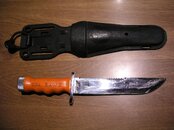evcitor99
New
I'm currently diving in Miami/Key Largo and haven't had a need for a cutting tool. I'm moving to San Francisco in March, and I've been told that it's more likely I could be caught in Kelp, weeds, or nets.
What Cutting tool should I get first? Should I just buy all three? What works best on the entanglement hazards of the Bay Area?
I understand this may be a bit repetitive, but thank you in advance for your input.
What Cutting tool should I get first? Should I just buy all three? What works best on the entanglement hazards of the Bay Area?
I understand this may be a bit repetitive, but thank you in advance for your input.





